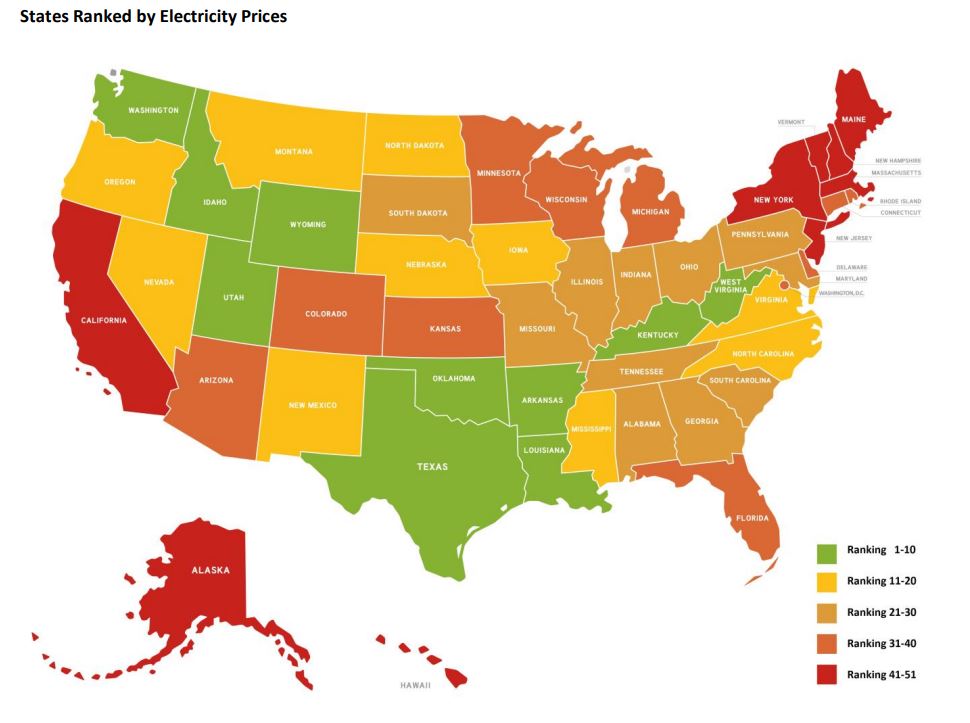Average electricity rates in rates in Virginia were 20th lowest in the nation in 2019, according to a survey based on U.S. Energy Information Administration data by the American Legislative Exchange Council. The average price per kilowatt hour was 9.52 cents.
But Virginians could lose their moderate electricity rates in the future as it joins the Regional Greenhouse Gas Initiative (RGGI) and moves towards the goal of a 100% renewable electric grid by 2050, emulating policies of the Northeastern states with among the highest electric rates in the country.
The 16 states with the highest electricity rates all have Renewable Portfolio Standards (RPS) in place, says the report. (The study lists Virginia as not having RPS, or renewable energy mandates, currently in place, but it does have the 100% zero-carbon goal.)
Membership in RGGI, a cap-and-trade system designed to drive out fossil fuel energy sources, also pushes rates higher. Virginia is scheduled to join the regional initiative in 2021. The State Corporation Commission expects that to add $6 billion in costs to Dominion Energy ratepayers.
Electric rates are only one piece of the energy puzzle. Another metric worth comparing is the total size of the electric bill. Electric bills vary not only by rates but by climatic conditions, use of alternative fuels like home heating oil and natural gas, and the effectiveness of energy efficiency measures. ALEC does not address those factors.
Likewise, as we have seen from the Big Freeze in Texas and the wild fires in California, reliability is a huge issue. Electric rates tell us nothing about how resilient an electric system is in the face of natural disasters and extreme weather events, nor how long it will take to restore power to customers.
Broadly speaking, however, there is a tradeoff between electric rates, reliability and environmental sustainability. Virginia has chosen to prioritize sustainability. As Virginia adopts policies similar to the Northeastern states, it is not unreasonable to expect electric rates to move toward Northeastern levels. Here are the average 2019 rates per kilowatt hour for those states:
New Jersey — 13.42
Maine — 14.04
New York — 14.34
Vermont — 15.36
New Hampshire — 17.15
Massachusetts — 18.4
Rhode Island — 18.49
Connecticut — 18.66
As for reliability, a lot of people make a lot of claims. Time will tell.


Leave a Reply
You must be logged in to post a comment.